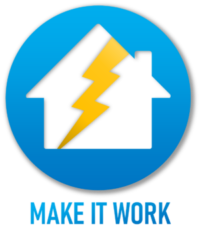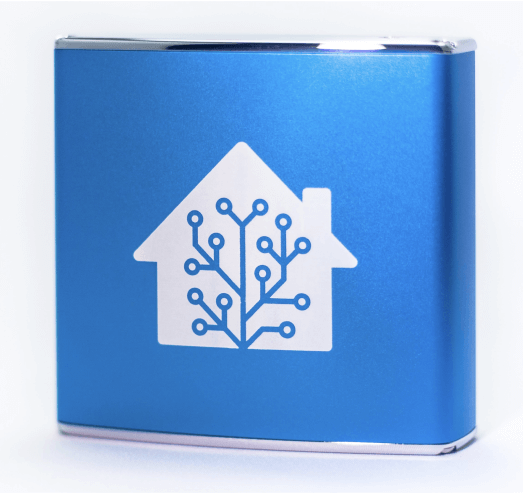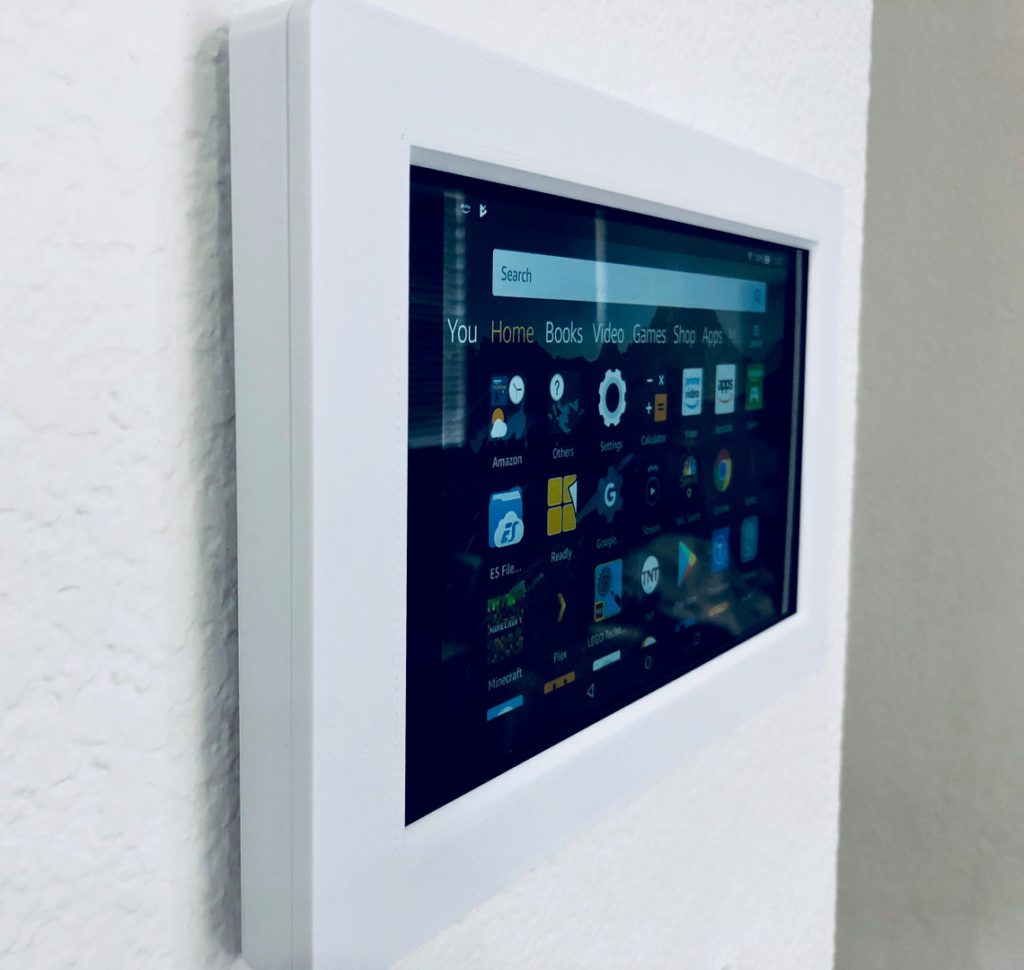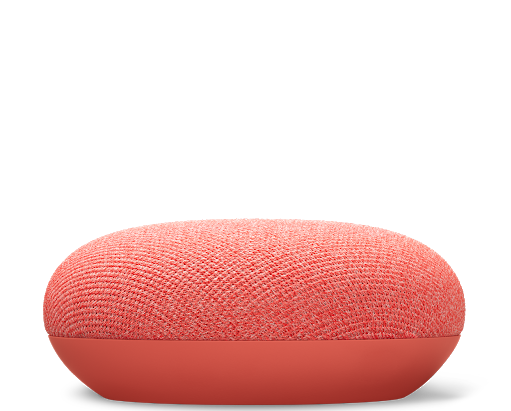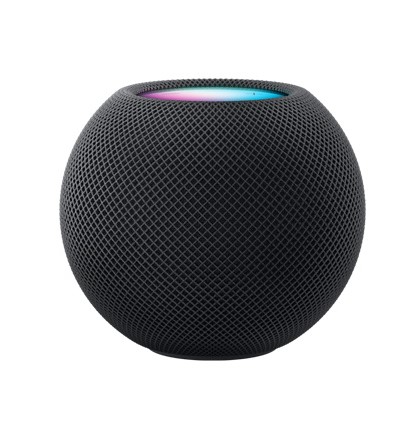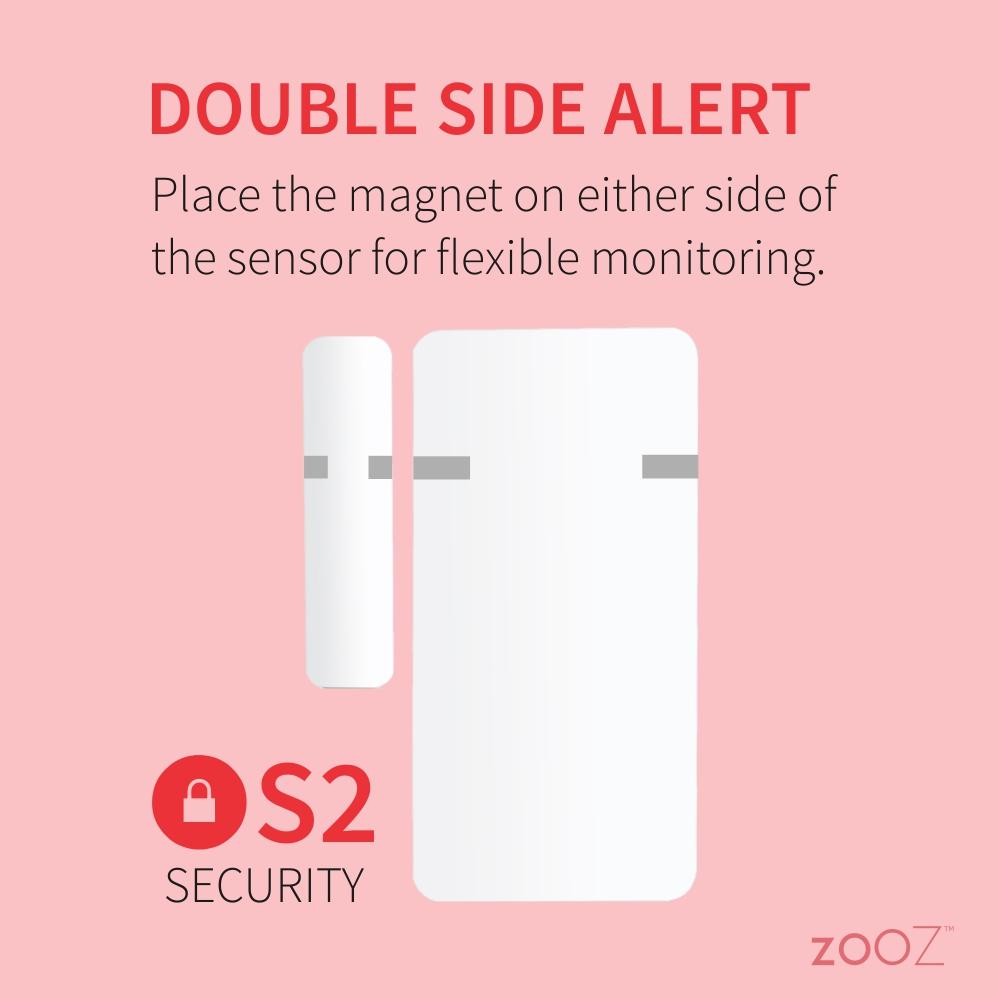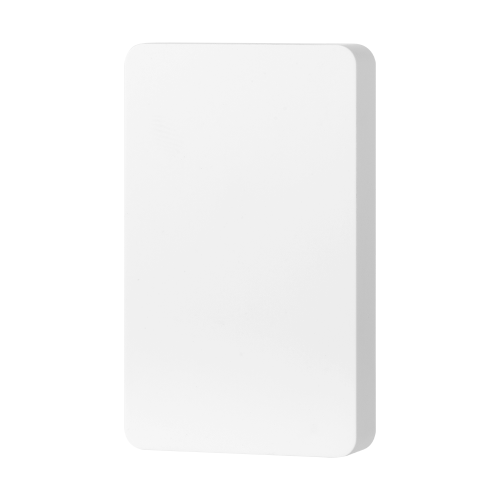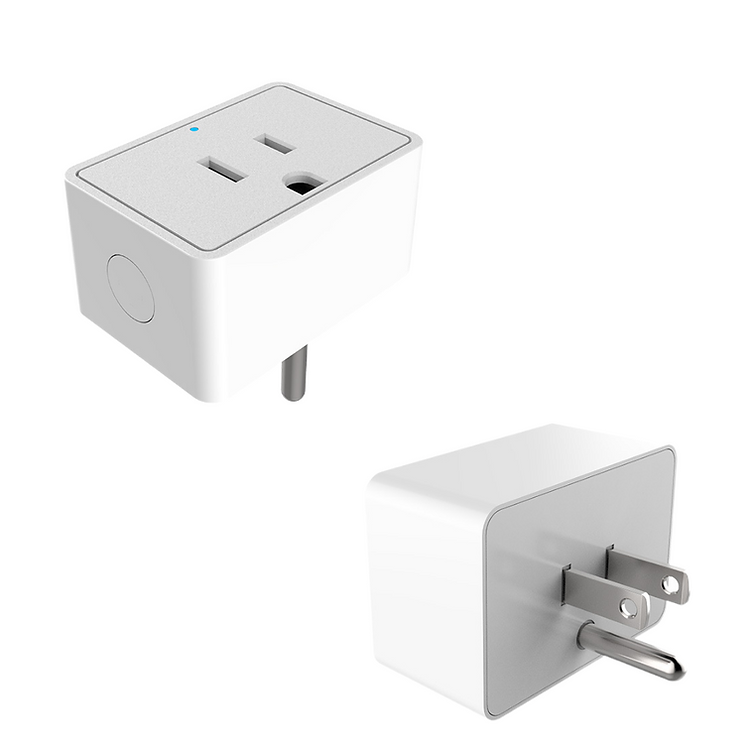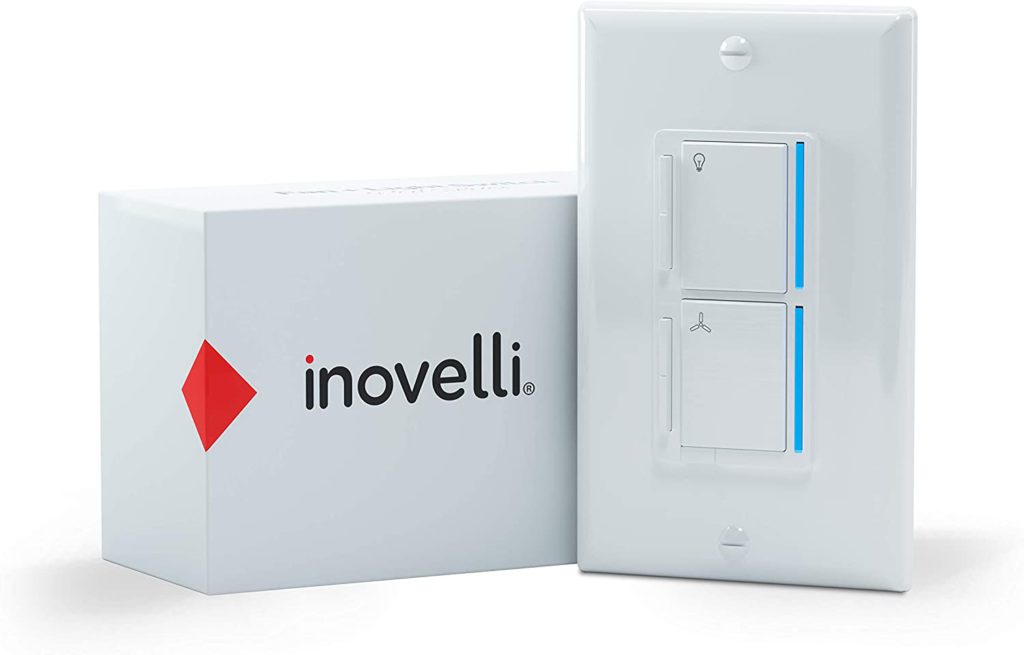This page contains a list of all of the products that I use and recommend in my smart home. If you have any questions about these feel free to hit me up on the socials! Each image contains a link to the product displayed. Note: Some links are affiliate links, where I earn a small commission on your purchase at no additional cost to you. I appreciate this support!
Hubs
I currently have four different hubs. I mainly use Home Assistant running on a Home Assistant Blue, but I also use a SmartThings Hub V3 and a Hubitat Elevation C7, mostly for testing purposes. Lastly, I use a CanaKit Raspberry Pi4 as a test setup for Home Assistant.
Coordinators
Each hub needs a way to communicate with other devices. Each of my hubs above have network (LAN) connectivity, so they can communicate with my WiFi smart home devices. The SmartThings hub and Hubitat Elevation C7 both have built in Z-Wave and Zigbee radios, so they can also communicate with Z-Wave and Zigbee devices.
However, my Home Assistant hubs don’t have built-in Z-Wave and Zigbee radios, so I had to buy USB coordinators that act as radios for the hubs. I currently use four of them: My main setup uses a Nortek HUSBZB-1 Zigbee/Zwave stick, which has both radios in one device, and also a Sonoff Zigbee 3.0 Dongle Plus. For my test setup, I use a ConBee II for Zigbee and a Zooz S2 Stick for Z-Wave.
Note: For Zigbee radios (Conbee II, Nortek HUSBZB-1, Sonoff Zigbee 3.0 Dongle Plus, a USB extender cable will be needed if your Home Assistant device (Raspberry Pi, HA Blue, etc.) has USB 3.0 ports. USB 3.0 interferes with 2.4 GHz signals, and can cause you drop-outs with Zigbee which is a 2.4 GHz comm frequency, so the extender is used to get your Zigbee radio away from the USB 3.0 port area.
Recently I started using some Bluetooth Low Energy (BLE) devices with Home Assistant. My Raspberry Pi4 has a Bluetooth radio, so they worked with my test setup, but in order to allow BLE connectivity for my main setup with the Home Assistant Blue, I had to add a Bluetooth USB dongle and a little USB extender. This setup works great!
Displays
For my wall-mounted dashboard, I use a Fire Tablet HD10. I used a recessed outlet box and 3D printed case to mount it, and a smart outlet to smart-charge it.
Network
For my WiFi network, I use the Nest Mesh WiFi system with a single access point. The only downside I’ve had with this setup is the lack of ethernet ports. To remedy this, I purchased an 8-port ethernet switch.
For my Z-Wave network, beside the many Z-Wave switches I have that act as repeaters, I have an Aeotec Z-Wave Range Extender that extends my Z-Wave network out to the mailbox contact sensor.

Voice Assistants/Smart Speakers
For voice assistants, I use both Amazon Alexa and Google Assistant. The devices I use are Echo Dot 2nd and 3rd gen, Echo Flex, Google Home Mini, and Google Nest Mini. I have an Alexa and GA device in almost every room of the house, and I use them both for different things. Since I like the Google’s ecosystem, I use Google for reminders, calendar events, and adding items to lists. I use Alexa devices asking about the weather and controlling my smart home devices among other things. I use both for remote control of my devices, but “Alexa” rolls of the tongue easier than “Hey Google”, so I use her more. I use Google for playing audio files from Home Assistant since it plays a lot nicer than Alexa.
I also picked up a refurbished HomePod Mini for testing purposes.
Thermostats
I only use Nest thermostats in my house. Although they aren’t the easiest to integrate with Home Assistant, once you have them in, they’re rock solid. Shown below are the ones I have, but also a recommendation for the one I’d buy if I could start over.
The reason why I got a 3rd Gen as well as the Nest E devices is because it allows you to combined two separate systems in one thermostat. I used it to tie my living area heating zone and main floor central air into the single thermostat.
Smart Locks
I’ve tested 7 different smart locks. The first 3 are the ones I use, and the others are ones I’d recommend.
Doorbell
I use the Amcrest AD410 doorbell, which integrates very nicely in Home Assistant. I also made a video showing how to integrate it with Home Assistant if you’re interested.

Power Monitoring
For whole-home power monitoring, I use the Emporia Vue Energy Monitor, which is a device that communicates via Zigbee with smart electricity meters. You can also monitor individual circuits with their amp clamp unit. For power monitoring smart plugs I recommend, see the smart plug section of this post.
Sensors
I use a variety of sensors in my smart home, including contact, motion, temperature, and humidity sensors. I reviewed a bunch of them in this video.
Contact Sensors
Motion Sensors
Temperature and Humidity Sensors
Smart Plugs
I don’t use too many smart plugs, but my typical use case is for power monitoring purposes. I use them to trigger washer and dryer alerts based on the power usage of the appliances, and I also monitor my freezer so it doesn’t stop working without me knowing it. I also use 2 Sonoff Basic smart switches to automate my garage doors. I reviewed a bunch of them in this video.
Smart Buttons/Remotes
Below are the smart buttons/remotes that I use and recommend. I made a video comparing them all that you should check out if you want more info on them. Also, I wrote this article.
Smart Lightbulbs / Lamps
All of my smart bulbs are WiFi devices. When I began my smart home journey, I started out with only WiFi devices because I didn’t have a hub capable of communicating with other types of devices. I bought the cheapest bulbs I could find, and still have no issues with them. I recommend these TreatLife bulbs as “good enough” for the price. They work with the Tuya/SmartLife apps, and can be integrated into HA via that integration. If you want something that has better color accuracy, then you should do some more research. Since light strips are really what I care about for colored lighting, these bulbs work fine. The white color tuning is super nice for matching the white color of the bulb with your existing non-smart bulbs.
In each of our bedrooms, I use a TreatLife Glow Light as a nightlight. These are also Tuya powered devices.

Light Strips
For smart light strips, I originally chose Govee strips because of their great color and quality. I also use Meross strips as well as a few others from less-known brands. The Govee ones are great for out-of-the-box use, but I actually like the Meross app the best. Also, Meross has Homekit compatibility.
Smart Light Switches
As my smart home has matured, I’ve found that smart light switches are far more useful to me than smart bulbs. They allow for physical control of the light as well as remote control, and can even be used to control a smart bulb without removing power to it (Inovelli and Zooz smart switches can do this).
When I first started out, I only bought WiFi switches, but once I purchased a hub I began to look at other options. I recommend the Inovelli Z-Wave switches as the best smart switches for Home Assistant, but if you’re looking for a cheaper option, Zooz Z-Wave switches are a close runner-up.
Inovelli and Zooz Switches
TreatLife On/Off and Dimmer Switches
Other

Fan/Light Switch Combos
Smart Curtains
For making my curtains smart, I use the SwitchBot Curtain as well as 2 different Zemismart Curtain Track systems. I absolutely LOVE these track systems, since they are super reliable and they are Tuya based. However, the track systems are cloud dependent, so that’s something to consider if you are concerned about that. Of course there is always manual control as a backup.
Other

